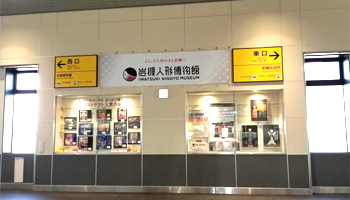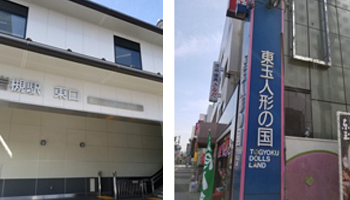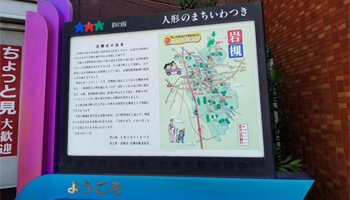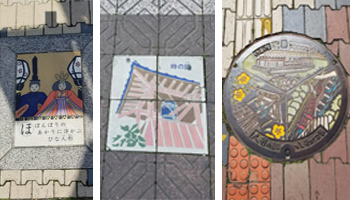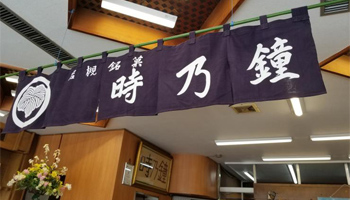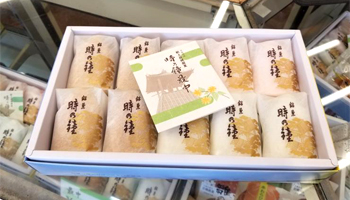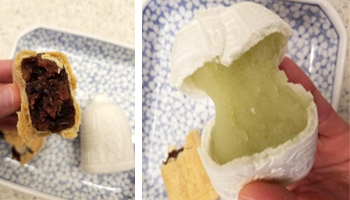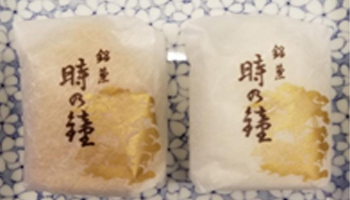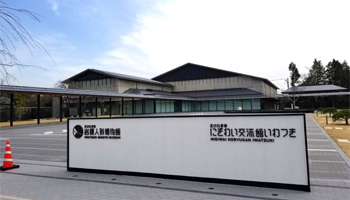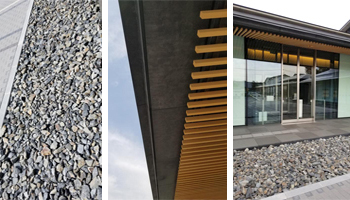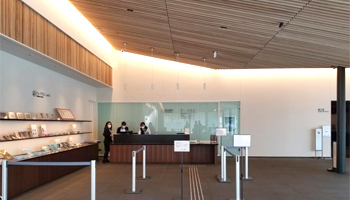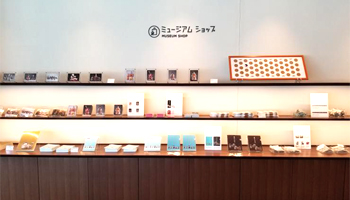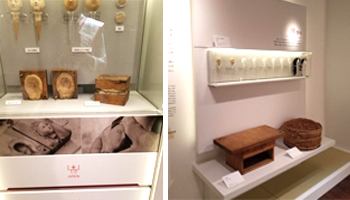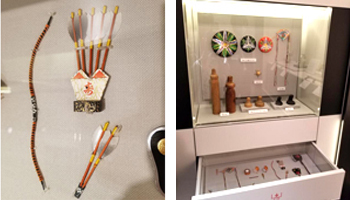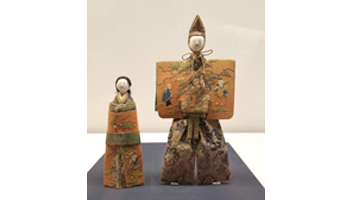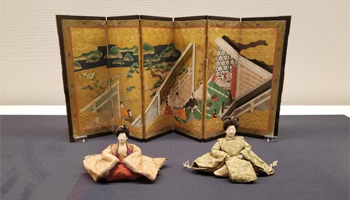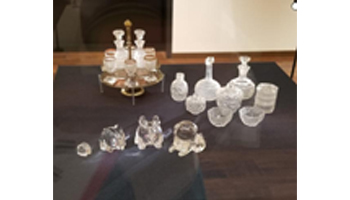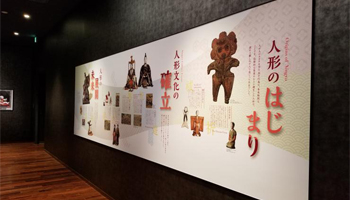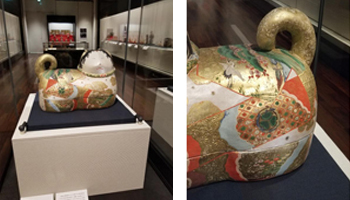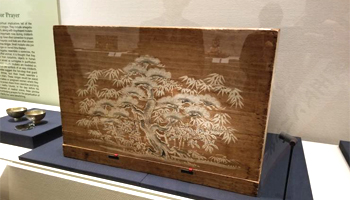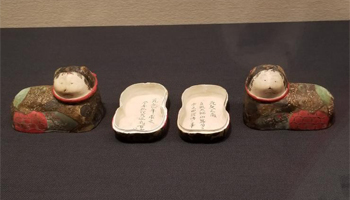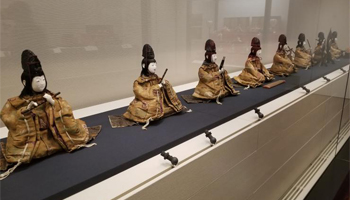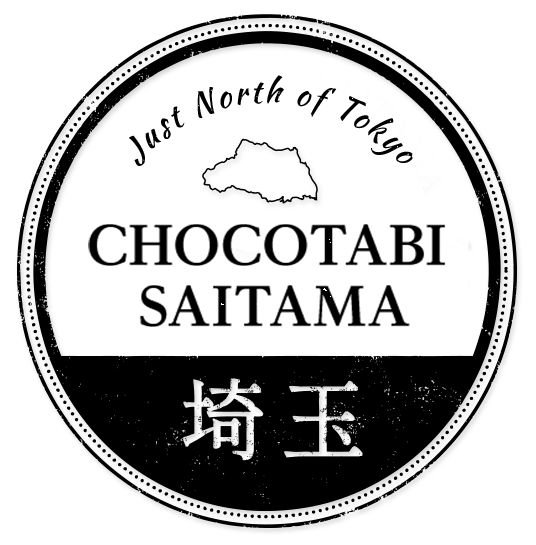Visiting The Saitama City Iwatsuki Ningyo Museum
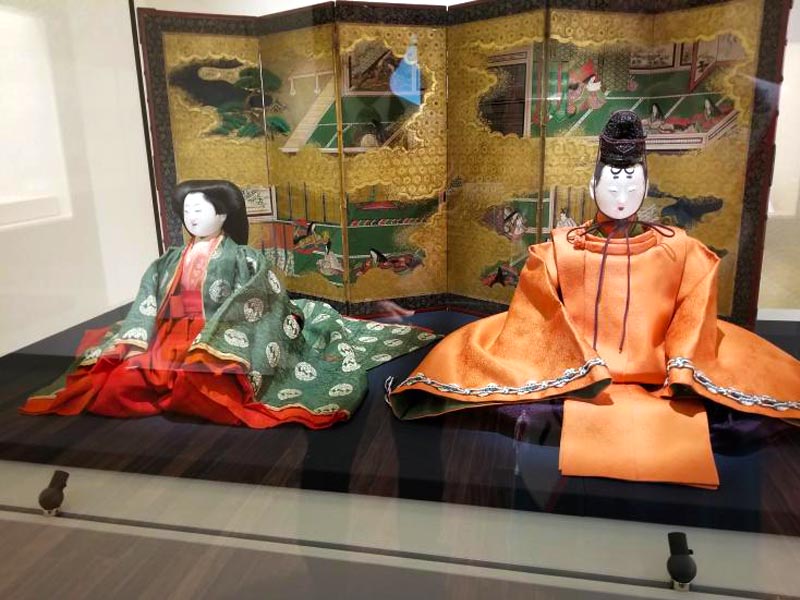
Hi there everyone! This is Love Saitama Ambassador Jessica.
The other day I had the wonderful opportunity to visit the newly opened Iwatsuki Saitama City Ningyo Museum. Ningyo means doll and human figures in English. As ningyo is tricky to be translated into English, the Japanese word ningyo was kept in the museum name.
The museum opened recently in February 2020, in the historic ningyo district of Iwatsuki. The Iwatsuki Ningyo Museum collects, conserves, and carries out research on ningyo (human figures).
Through exhibitions and educational activities, they aim to raise awareness of the culture of ningyo.
I travelled by train to the museum this time. It takes 10 minutes on foot from the station.
Using the Tobu Urban Park Line (Noda Line), I went to Iwatsuki station. After arriving I went out the East exit.
The view from the ticket gate. The exit for the museum is clearly labeled.
After coming out the East exit, walk straight along the main road leading away from the station,
All around the station there are shops specializing in ningyo crafts.
This is one such shop. It’s very well known for its high quality ningyo products.
After walking a little more I came across a map of the Iwatsuki area.
Walking along there are tiles embedded into the pavement. This one shows famous Hina ningyo.
This one shows Toki no Kane, a famous bell tower in Iwatsuki.
When you arrive at this intersection, there is very easy to read direction board showing where to turn for the museum.
So we turn left at the second stoplight. The location is called Iwatsuki-eki Iriguchi Iwatsuki Station Entrance.
After turning left we walk straight for around 500 meters and the museum will appear on your right!
As I was walking I noticed this beautiful manhole. Actually Japan and Saitama are famous for it’s manhole cover designs.
This one shows Toki no Kane the bell tower and other famous areas in Iwatsuki
Just before arriving at the museum, I stopped along the way to look inside this famous traditional dessert and senbei shop.
I had heard their traditional desserts were famous and I wanted to try them for myself.
The glass cabinets had so many different types of sweets.
The noren in the shop was beautiful.
The shop’s staff member recommended this dessert. With Japanese red bean (azuki) in a crisp wafer shell in the shape of the Iwatsuki Bell Tower, Toki no Kane.
I decided on these two desserts!
The red bean version was delicious.
This one is a yuzu citrus with shiroan (white sweet bean). I haven’t tasted anything like this before. It was a really new taste experience for me. Very recommended.
After walking down the road for a few minutes, I arrived at the museum!
I was in awe of the simple and elegant construction of both the museum itself and the museum precinct restaurant andamenity buildings.
The first thing that really struck me was the beautiful use of textures in both the building and the ground area.
The visual differences in different materials, stone, wood, brick, are very amazing.
This is the main entrance:
As you walk inside the museum, you will see an area that I think would be a great place to take a commemorative photo before you start looking around.
The museums logo and name are clearly visible.
To your left is the museum shop and reception. Here you can purchase tickets for entry. Signage is in both Japanese and English and is very easy to read.
Prices are shown on a sign board as follows I will put more details on pricing and hours at the end of this article.
The museum shop is visually very beautiful and well designed.
They have commemorative books about the museum in English and pamphlets available too.
In the entrance area there is a sign which shows the cafe, nursery room, barrier free bathroom, coin locker area.
The museum also has free wheelchair rental, barrier free accessibility, disabled parking, mobility dog admissions and discounted admissions for people with disabilities.
After buying a ticket, the entrance to the museum is to the right of the reception.
The exhibitions are divided into three very easy to understand categories.
Room One,
Ningyo production in Saitama.
Room Two,
Japan’s ningyo from the collection
Room Three,
A special room where themes will change several times a year.
Let`s visit room one, Ningyo Production in Saitama first.
As Saitama Prefecture is Japan’s largest producer of ningyo, this exhibition room introduces how ningyo are made, with a strong focus on ningyo from Saitama.
The photo below shows the different steps in the production of the head of a ningyo. The head is often made by a totally separate craftsperson who specialities in making heads.
The photo below shows the molds for the head and drawings which can be pulled out as part of the exhibition.
The special tools that are used in the crafting of ningyo are displayed too.
There is a video library too with a touchscreen panel which shows craftspeople making ningyo which compliments the materials and tools are on display. The videos are available in English.
I found this very tiny set of arrows and a bow which are put together with ningyo.
The scale of these items, fans, instruments, is so very tiny! These items too are usually made by by a craftsperson specializing in making these intricate items.
Moving along I visited room two, Japan’s Ningyo from the Collection: Many classic ningyo are on display in this room.
The museum has many ningyo in its collections. One important collection was gathered by the modern Japanese-style painting artist Nishizawa Tekiho (1889–1965).
Nishizawa-san`s collection has a wide range of varieties of ningyo which are on display at the museum.
During the Edo period ningyo culture really started to emerge. In 1930s, ningyo where officially reconginsed as an art form.
As you walk into the room colourful and intricately made ningyo greet you.
Standing ningyo were very interesting for me as until I visited the museum I had only ever seen sitting ningyo.
I was most familiar with ningyo for seasonal celebrations, especially hina ningyo which is perhaps the most famous worldwide.
Hina ningyo of all different sizes are on display along with amazing Hina accessories which together let you feel the atmosphere of celebration that is central to the hina ningyo.
Amazing glass items in very tiny size.
This beautiful white ningyo represents a healthy and bountiful upbringing in a period where not all children lives through to adulthood.
Miniature scale delicate items where everywhere!
More ningyo items that are both exquisitely small and exquisitely beautiful! Drums, dogs, birds, a storage box, all intricately designed and painted.
After leaving room two, out in the hallway is an easy to understand visual timeline of the evolution of ningyo:
Onto the third room: the special exhibitions room.
This room holds a collection which are so fragile that, only a limited amount will be on display, and the ningyo on display will be changed periodically in order to preserve the ningyo.
The time when I visited there was a special inu bako (Dog shaped storage box) exhibition.
The lights are low and the display cabinets are temperature controlled in order to preserve the ningyo on display.
As you walk into the third room you are greeted by two large inu bako (Dog shaped storage box).
These inu bako cases are also from Nishizawa Tekiho’s collection. Made by paper machie and adorned in bright colours and symbolistic imagery, their faces are almost human like. They represent an easy childbirth.
This is one of the boxes that the inu bako case was stored in. The case itself has a wonderful design too!
Very tiny inu bako cases! They are so cute. Again, painted with similar symbolistic imagery that adorn the larger cases.
This amazing line up of musicians all playing different instruments was amazing. Their clothes where all the same.
This amazing collection was given to the museum by an auspicious Japanese family so the museum could display their collection for everyone to see.
Very tiny small sized ningyo. In times where large shows of wealth were not allowed, smalled and more compact but very well made ningyo became popular.
Lastly a Hoko ningyo from the Edo period. Made from silk and modelled on the way small children crawl. Usually placed beside a baby or pregnant woman to ward off evil spirits and protect from calamity.
There ended my tour of the Iwatsuiki Ningyo Museum. I entered with only the knowledge of Hina ningyo and left with so much information and a new found appreciation to ningyo culture and the craftspeople that are central to ningyo production. I learned about changes from era to era resulted in changes to ningyo too, and by looking at ningyo we can gather a lot of information about that period of time in history.
Even if you don’t have a deep knowledge of ningyo I really recommend visiting the museum which has wonderful amenities and an outstanding building design which welcomes everyone.
Easy availability of English information makes the museum visit very informative and fun!
Other ways to get to the Iwatsuki Ningyo Museum:
Community Bus (4 minutes)
From East west gate of Iwatsuki Station, hop on the bus bound for Jion-ji Kannon, and get off the bus at Iwatsuki Shogakko Minami stop.
Museum Hours
From 9a.m. to 5p.m.
(Last admission 30 minutes before closing.)
Closed every Mondays (except national holidays). Closed over New Years (December 28 to January 4)
Admission Prices
General admission is 300 yen.
High school and university students and persons over 65: 150 yen.
Elementary school and junior high school students are 100 yen.
Name of the place Iwatsuki Doll Museum
Address 6-1-1, Honcho, Iwatsuki ward Saitama city, Saitama, 339-00587
URL https://ningyo-muse.jp/
Entry Fee
General admission is 300 yen.
High school and university students and persons over 65: 150 yen.
Elementary school and junior high school students are 100 yen.
Love Saitama Ambassador
Jessica Gerrity
Since 2018 Jessica has been introducing interesting places and people in Saitama Prefecture as the “Love Saitama Ambassador” via Chocotabi Saitama and her social media.
Instagram:https://instagram.com/jessintokyo
Twitter : https://twitter.com/jessintokyo
Since 2002 Jessica has been living and working in Japan as a TV personality on Japanese TV.

